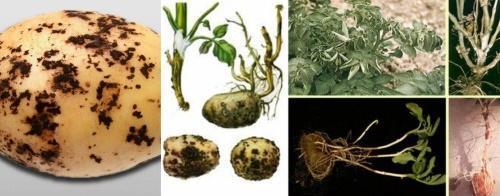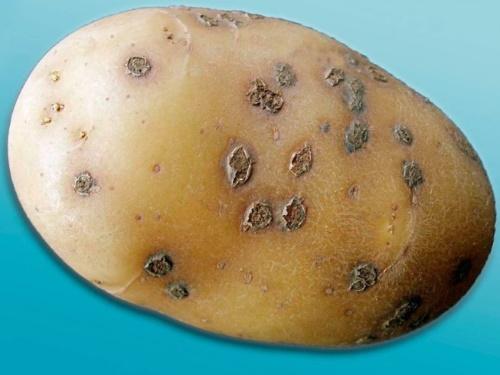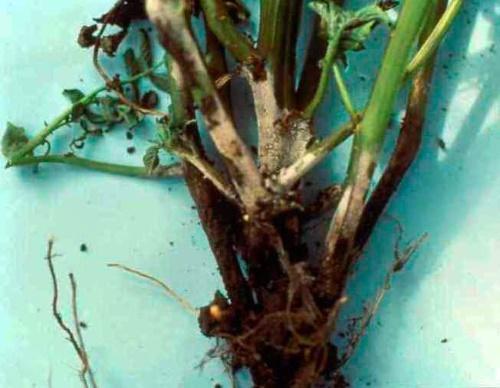We fight against rhizoctonia or black scab of potatoes
 Black scab of potatoes is one of the main and most dangerous enemies of this root vegetable and gardener. It not only spoils the harvest, reducing its quantity and quality, but also makes it impossible to harvest home seed material. In order to defeat potato rhizoctoniae (as the disease is called), it is important to know what causes it and what conditions are favorable for development.
Black scab of potatoes is one of the main and most dangerous enemies of this root vegetable and gardener. It not only spoils the harvest, reducing its quantity and quality, but also makes it impossible to harvest home seed material. In order to defeat potato rhizoctoniae (as the disease is called), it is important to know what causes it and what conditions are favorable for development.
The "culprit" of rhizoctonia
Causative agent black scab is a parasitic and very viable fungus, Rhizoctonia solani Kuehn. It is noteworthy that potatoes are not the only crop he loves. The parasitic fungus is capable of having other hosts, both among garden crops (nightshade, pumpkin, cruciferous) and among weeds (horsetail and sow thistle are especially preferred).
Spores of the fungus winter well in the soil for 4 years, and in wet and cool weather they begin to actively develop, while the heavier and poorer in organic matter the soil, the better they feel. Also, the parasitic fungus persists on the tubers themselves, leading to damage to the crop during storage and further infecting the seedlings.
You can eat infected potatoes, but in no case can you use them for reproduction.
How do you know if a potato is sick?
Black scab threatens potatoes at all stages of the growing season. Depending on when this happened, you can determine that the culture is infected by the following signs:
- ripe vegetables are covered with black tubercles, in places merging into continuous growths;
- when storing the crop, spotted roots begin to rot;
- if the potato managed to overwinter, then the sprouts that it releases in spring are brown-red, highly branched and very fragile;
- on bushes affected by rhizoctonia, with the beginning of flowering, white bloom appears at the bottom of the stems and they rot;
- the surviving bushes do not develop, remain low, the leaves from the top begin to turn red and curl;
- sick young potatoes are also excreted by ulcers, and gradually become rotten.
Control measures
The fight against rhizoctonia is mainly in preventive measures aimed at preventing the creation of favorable conditions for the development of the fungus. This requires:
- Treat seed material before planting with fungicides (Maxim, Baktofit and others).
- Fertilize the soil with organic matter (especially manure) and mineral preparations annually.
- Follow crop rotation in the garden beds.
- Start planting no earlier than the temperature reaches 8 degrees Celsius and do not "bury" the tubers too deep.
- Harvest before the cool and damp autumn weather sets in, favoring the development of the fungus (until September).
- Burn all parts of the plant infected with Rhizoctonia, including weeds.
If tubers with black scab are found in homemade potatoes, it is better to completely change the seed next season, acquiring varieties that are resistant to this disease.